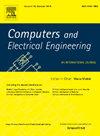Evaluating sustainable wind energy sources with multiple criteria decision-making (MCDM) techniques
IF 4
3区 计算机科学
Q1 COMPUTER SCIENCE, HARDWARE & ARCHITECTURE
引用次数: 0
Abstract
Rural regions with complex topographical constraints face significant challenges in implementing sustainable wind energy solutions due to variations in wind resource availability, infrastructure limitations, and policy gaps. To address this issue, this study integrates Multiple Criteria Decision Making (MCDM) techniques to systematically evaluate and prioritize various wind energy alternatives, considering technical, economic, environmental, and social factors. The PAPRIKA (Potentially All Pairwise RanKings of all possible Alternatives) method is employed to rank wind energy systems based on key criteria such as Capacity Factor, Environmental Impact, and Policy Framework. The findings indicate that Onshore Wind Turbines emerge as the most optimal solution (score: 69.9) due to superior energy production and cost-effectiveness (LCOE). Vertical Axis Wind Turbines (66.5) and Hybrid Wind Systems (60.8) follow, demonstrating balanced performance. Offshore Wind Turbines and Wind Farms with storage show promise but face grid integration and policy challenges, while Floating and Micro Wind Turbines rank lowest due to resource constraints. This research underscores the role of MCDM in integrating quantitative and qualitative assessments, providing a structured framework for energy planners and policymakers to make informed decisions. By optimizing wind energy deployment in rural settings, the study contributes to achieving Sustainable Development Goals (SDGs) 7, 9, and 13, fostering a resilient, low-carbon, and inclusive energy transition.
用多准则决策(MCDM)技术评价可持续风能
由于风能资源可用性的变化、基础设施的限制和政策差距,具有复杂地形限制的农村地区在实施可持续风能解决方案方面面临重大挑战。为了解决这一问题,本研究整合了多标准决策(MCDM)技术,系统地评估和优先考虑各种风能替代方案,考虑技术,经济,环境和社会因素。PAPRIKA(所有可能的替代方案的潜在全部两两排名)方法是根据容量系数、环境影响和政策框架等关键标准对风能系统进行排名。研究结果表明,由于优越的能源生产和成本效益(LCOE),陆上风力涡轮机成为最优解决方案(得分:69.9)。垂直轴风力涡轮机(66.5)和混合风力系统(60.8)紧随其后,表现出平衡的性能。海上风力涡轮机和带储能的风力发电场显示出前景,但面临电网整合和政策挑战,而浮式和微型风力涡轮机由于资源限制排名最低。这项研究强调了MCDM在整合定量和定性评估方面的作用,为能源规划者和决策者做出知情决策提供了一个结构化框架。通过优化农村地区的风能部署,该研究有助于实现可持续发展目标7、9和13,促进有弹性、低碳和包容性的能源转型。
本文章由计算机程序翻译,如有差异,请以英文原文为准。
求助全文
约1分钟内获得全文
求助全文
来源期刊

Computers & Electrical Engineering
工程技术-工程:电子与电气
CiteScore
9.20
自引率
7.00%
发文量
661
审稿时长
47 days
期刊介绍:
The impact of computers has nowhere been more revolutionary than in electrical engineering. The design, analysis, and operation of electrical and electronic systems are now dominated by computers, a transformation that has been motivated by the natural ease of interface between computers and electrical systems, and the promise of spectacular improvements in speed and efficiency.
Published since 1973, Computers & Electrical Engineering provides rapid publication of topical research into the integration of computer technology and computational techniques with electrical and electronic systems. The journal publishes papers featuring novel implementations of computers and computational techniques in areas like signal and image processing, high-performance computing, parallel processing, and communications. Special attention will be paid to papers describing innovative architectures, algorithms, and software tools.
 求助内容:
求助内容: 应助结果提醒方式:
应助结果提醒方式:


